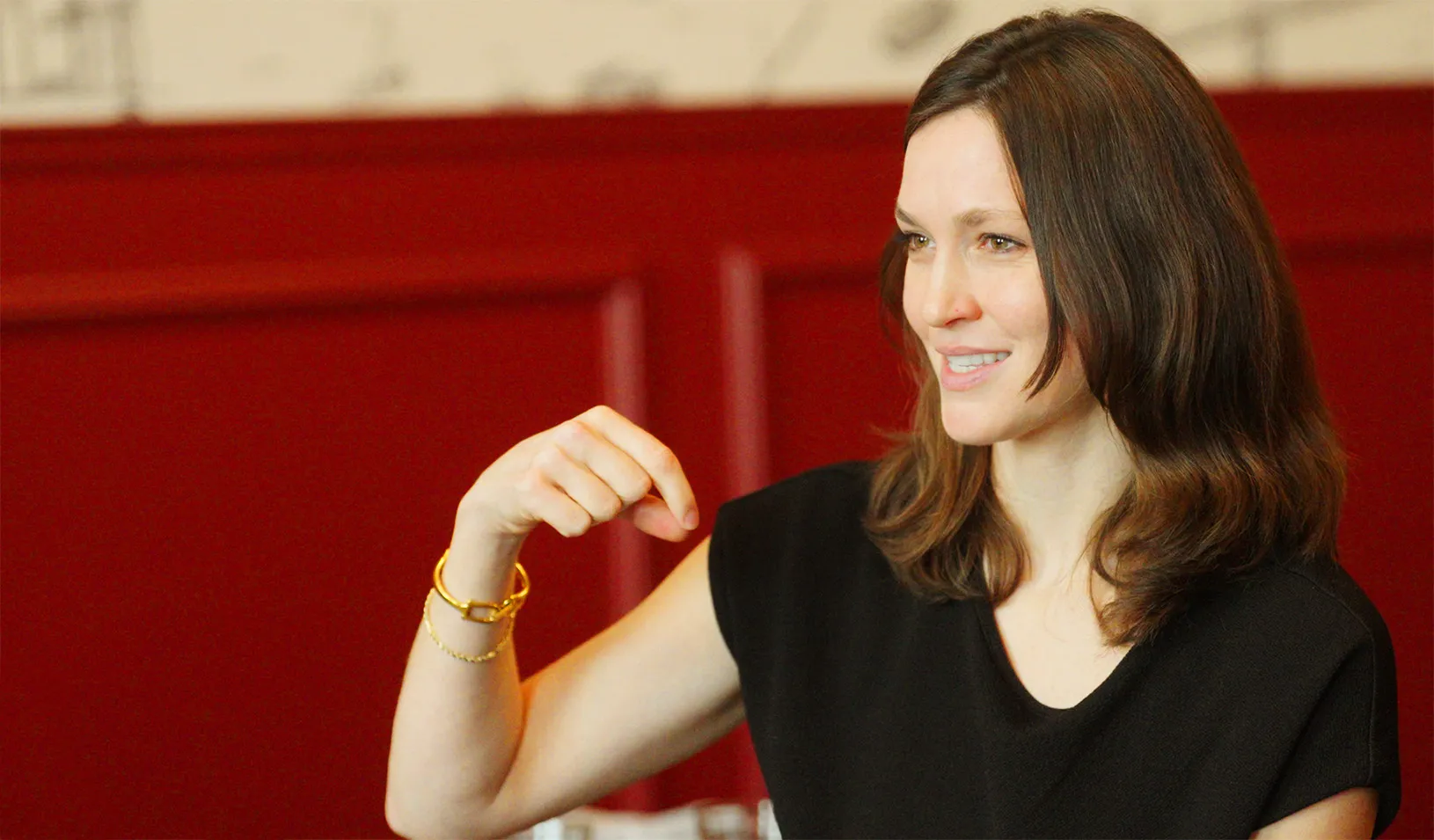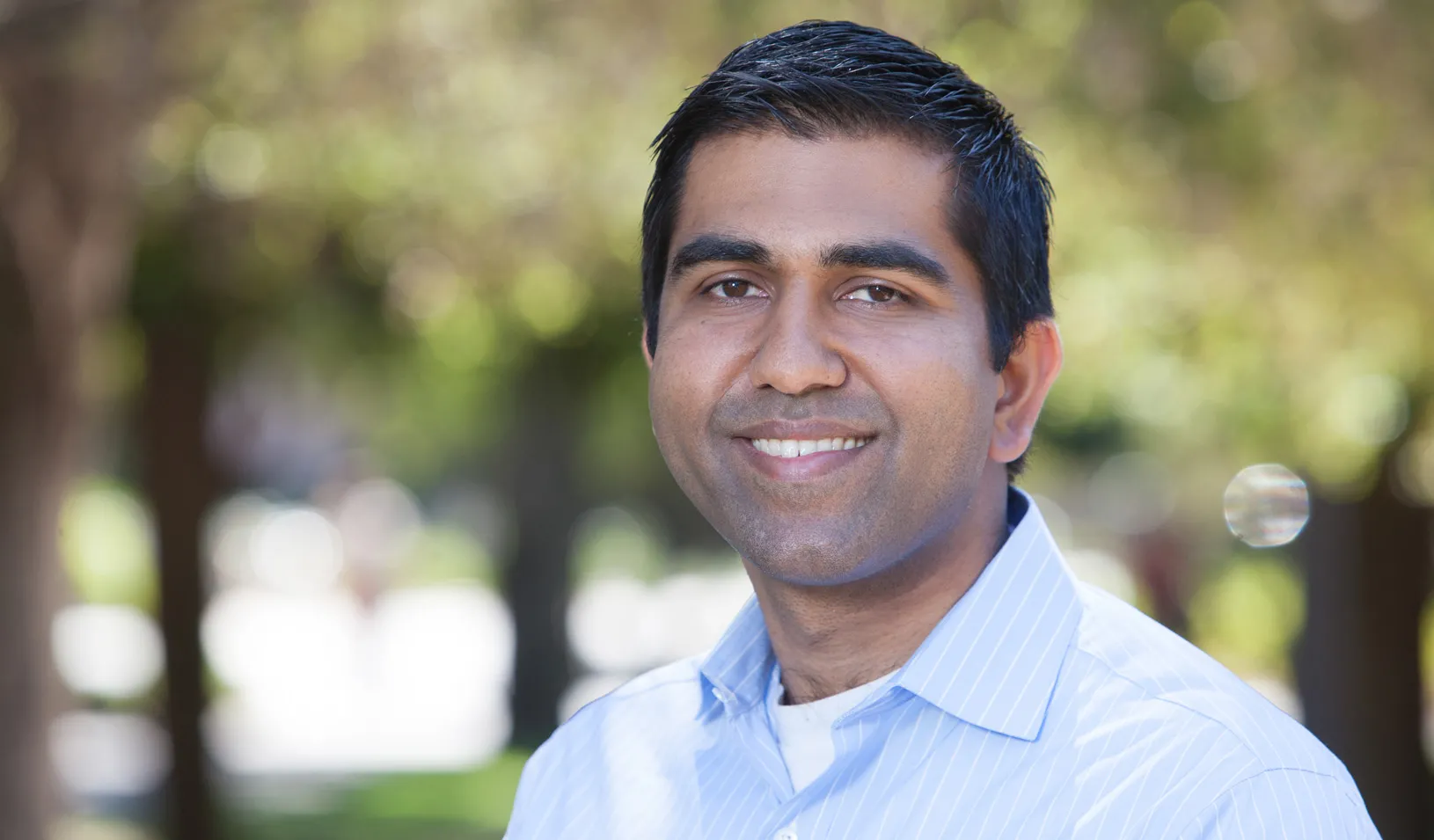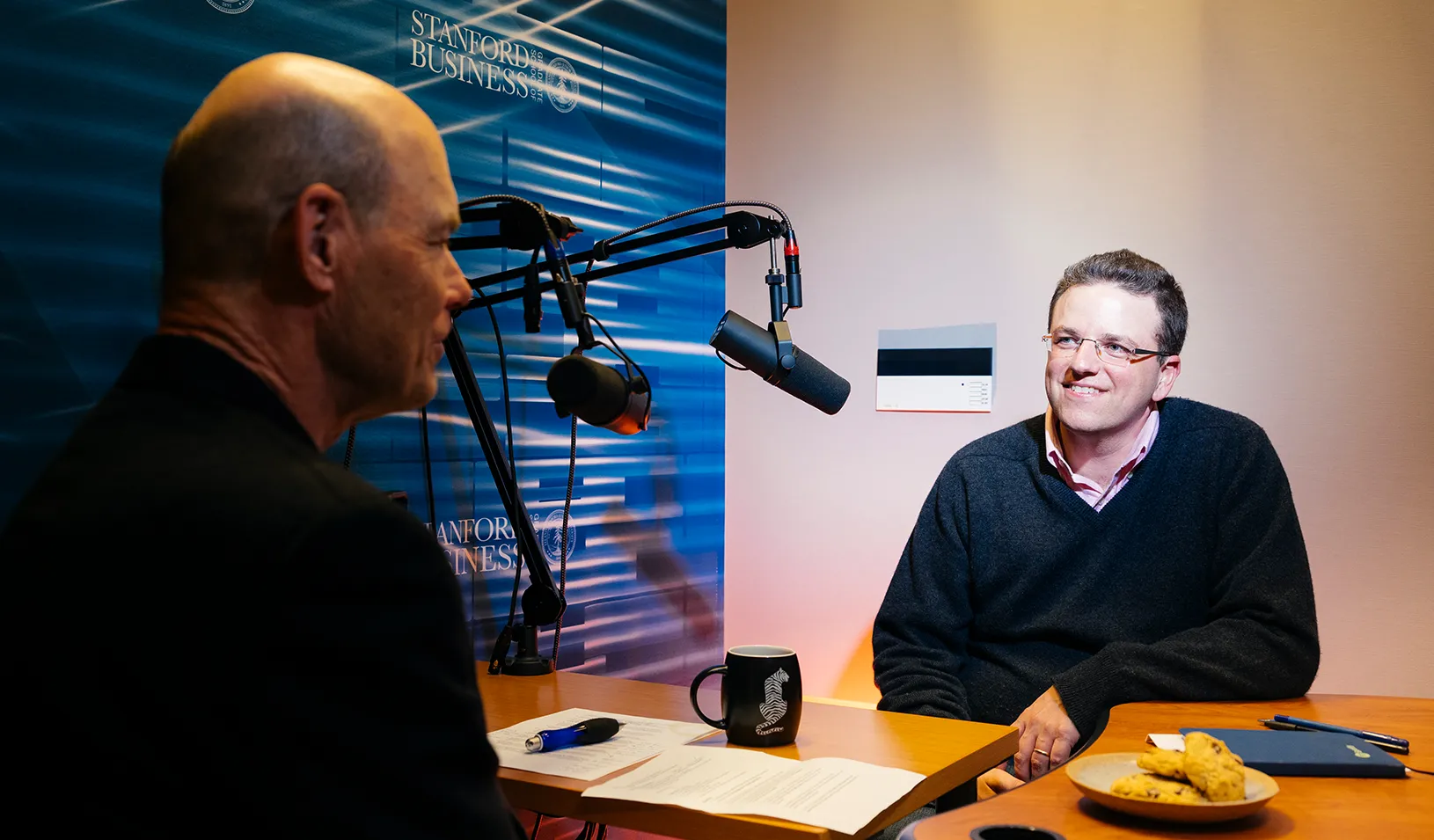Can Childcare Be Fixed? These Students Went Looking for Solutions
Two MBA students spent a year surveying parents, executives, and policymakers about our “unprecedented childcare crisis.”
December 03, 2021

Many low-income parents must choose between work and caring for their kids. | iStock/Nadezhda1906
Jim is a 34-year-old warehouse worker whose wife died of COVID several months ago, leaving him to care for their 4-year-old daughter alone. He is new to the California town where he lives, and his closest family member is hundreds of miles away.
Because Jim (a pseudonym) works the 4 a.m. to noon shift, no local daycare facility can take his child. Desperate for help, he finally persuaded the neighbor of a friend to watch his little girl on weekdays, but he is perpetually anxious about what will happen if that arrangement falls through. “I can’t lose my job, and I can’t bring my kid to work,” he lamented to a pair of researchers who interviewed him. “What should I do?”
It’s a story familiar to millions of parents who struggle with childcare needs, and to Sarah Alexander and Olivia Rosenthal, the second-year MBA students at Stanford GSB who interviewed Jim and scores of parents like him.
Childcare has animated conversation in legislatures and on playgrounds for decades, but the pandemic exposed just how precarious the system is, especially for low-income parents. Many working-class parents have jobs that cannot be done remotely, and childcare became especially difficult when lockdowns kept their kids out of school. Expenses associated with childcare average about $10,000 per child per year — and can be two or three times that much in expensive urban areas.
But those realities don’t begin to describe the complexity of the issue, say Alexander and Rosenthal. During their first year in the MBA program, they focused on learning as much as they could about what parents need, what is available, and where the holes are. “Sarah and I came to this issue because we are in the midst of an unprecedented childcare crisis,” Rosenthal says. “There has been very little innovation for lower-income families to be given the choice to take care of their children however they want to.”
Supported by an Impact Design Immersion Fellowship and a Racial Equity Grant from the Center for Social Innovation, Alexander and Rosenthal partnered with manufacturing, service, and retail companies to conduct dozens of in-person interviews on factory floors, distribution centers, and other workspaces in the San Francisco Bay Area and Georgia. They talked with social workers, childcare providers, policymakers, middle managers, and executives. And they surveyed more than 900 parents across the country, asking them to identify pain points such as daycare hours that don’t match work hours. They also queried the parents about whether they would use hypothetical benefits such as an advocate who could help identify and apply for assistance programs.
After collecting and analyzing an enormous amount of data, Alexander and Rosenthal now plan to design a product or service to help address an aspect of the childcare crunch.
Unpacking What Parents Need
The two women were surprised by some of their discoveries. One was the complicated relationship many parents have with daycare. “A lot of parents, particularly in this demographic, rely on family, friends, or neighbors as their primary caregivers and are very happy with that arrangement,” Rosenthal says. “They wouldn’t send their child to a daycare if their employer had one.”
Another revelation was how little some employers know about the challenges their employees face. “These companies want to solve the problem, but they have very little information about what their employees need. Sometimes they didn’t even know how many of them were parents,” Alexander says.
“We knew we were onto something when we started to get inbound emails from some of the largest employers in the country saying, ‘We heard you’re doing some digging on childcare concerns in the workforce. Could we get a call with you?’” Rosenthal says.
The researchers augmented their quantitative data with stories about individual employees (anonymized for privacy) that gave their corporate partners more insight into what working parents were struggling with. “It was fascinating to watch them react,” Alexander says of the executives with whom they shared their findings. “They know the problem, but they don’t know the depth of it. It was one of the most satisfying parts of the project.”
Childcare reform is vexing in part because of the competing dilemmas that emerge en route to a solution. As Congress debated the contours of a proposed childcare entitlement program in November, it was clear that the details were messy. “There are a lot of people working on this from a lot of different angles who don’t talk to each other and who see different sides of the same issue,” Alexander notes. “You’ll hear parents saying, ‘I wish there was universal pre-K. That’s all I want.’ Then you talk to a daycare provider and they say, ‘Actually, the 3- and 4-year-olds are subsidizing the higher cost of care for infants.’ If you introduce universal pre-K, you’re going to put some daycares out of business. There are all of these nuances.”
Another example: satisfying the needs of parents who have more than one job. Workers at a package delivery company that Alexander and Rosenthal interviewed typically only work five-hour shifts because of the physical demands of the job. As a result, most of them have second jobs during their off hours, so their childcare needs are wildly variable. They’ve had to cobble together childcare arrangements, Rosenthal says, offsetting their schedules with their spouses, which means they get very little time together as a family. And those trade-offs come with a cost to their mental and emotional health.
“We Ditched the Clipboards”
As an educational experience, the project has been extraordinary, Alexander and Rosenthal say. Although both have deep experience in research methodology, they had to adjust and iterate in part because the topic was so personal. The learning came not only in designing survey instruments and other research tools but also during on-the-ground activities such as interviewing parents at their workplaces, Alexander says. “We are walking around the floor of this distribution center as they’re throwing boxes and blasting music, and we’re asking, ‘Do you mind if we talk about your kids?’ And they’re like, ‘Who are you?’”
“We intended to go in with these structured interviews and activities and within two minutes of getting there, we ditched the clipboards. It was much more like a conversation than an interview.”
And those conversations deepened their resolve. “We didn’t anticipate how emotional our interviews could get,” Alexander says. “We had some parents crying. This is such a personal issue; it’s their kids. They want the absolute best for them, but they are under such stress dealing with trade-offs that they aren’t comfortable with so they can keep their jobs. It really weighs on these parents.”
Rosenthal was struck by how attitudes regarding childcare differ from one region to another, and that the notion of childcare programs themselves are sometimes viewed skeptically. “There are a few things that seem distinctly cultural about the way our country thinks about childcare,” she says. “This country has never looked at childcare as a public good, whereas other countries have.” (Annual public spending on children two and under averages about $500 in the United States compared to $14,000 in other developed countries, according to the Organization for Economic Cooperation and Development.)
As much as they would like to see an expansion of government benefits for childcare, Alexander and Rosenthal acknowledge that there are multiple barriers beyond funding. One is the attitudes of parents themselves. “There are many, many issues around trust and safety,” Alexander notes. “Many of the parents we spoke with would not allow a stranger to watch their child,” even if it were subsidized.
One Size Doesn’t Fit All
A federal program that doesn’t account for individual circumstances is likely to fall short of what many parents need. Moreover, the variability in state and local provisions conspire against a large, formula-based program. “The regulations and compliance can be very heavy around who can be a daycare provider, what you need to watch children, what legally is required of you,” Rosenthal says. “That makes it really hard to think of national solutions.”
She and Alexander agree that the reliance on family or friends to satisfy childcare needs creates vulnerabilities that aren’t easily resolved. But it also may be the most important one to address. “It was really apparent to us how precarious a lot of these situations are, especially for single parents,” Alexander says. “The smallest disruption sends the whole thing falling. There’s really no backup plan.”
It is into that space, they concluded, that their interest in a marketable childcare product might fit. “We’ve been thinking a lot about those parents who rely on more informal means of care. What are the ways that you could dignify that existing care arrangement and also make it a bit more resilient?” Rosenthal says.
They’re also pondering whether a low-cost or subsidized concierge service of sorts would help parents navigate benefits programs and find childcare solutions based on their needs. Their findings revealed that low-income parents spend an average of five hours per week figuring out how to obtain suitable childcare, and one of every six misses out on benefits they’re entitled to.
Another takeaway from the study was the compelling need for mental and emotional support for low-income parents. Parents reported feeling lonely, guilty, and unacknowledged as they fought to sustain themselves while also caring for their children. “They feel they are burdening family members, or not doing a good enough job, or that no one really cares or understands what they’re going through,” Rosenthal says. “Whatever solution we design has to accommodate these very real mental and emotional needs.”
Now they are piloting some ideas with their employer partners to improve the resiliency of care. And they are committed to using their study to make a difference. “We deeply believe that we have some unique insights that will allow us to actually tackle these issues,” Alexander says.
Which brings us back to Jim. Moved by his circumstances, Alexander and Rosenthal spent uncounted hours working with benefits programs, tax consultants, and government agencies to find him help. Finally, they hooked him up with a childcare resource and referral office where a caseworker found a daycare option. And they shepherded him through the process of applying for the childcare tax credit that he was eligible to receive. The time and effort required to make it happen underscores the problem, Alexander says. “It took trying to navigate the system ourselves to realize just how insane this is.”
For media inquiries, visit the Newsroom.
Explore More
Changemakers: Teaching Young People a Recipe for Success in the Restaurant Industry

Stanford GSB Professor Neil Malhotra Named Carnegie Fellow

Stanford GSB Researchers Discuss the Ideas They’re Most Excited About
